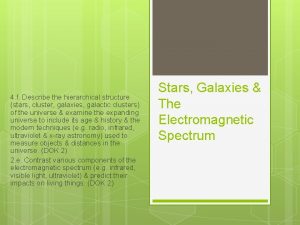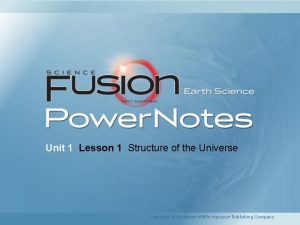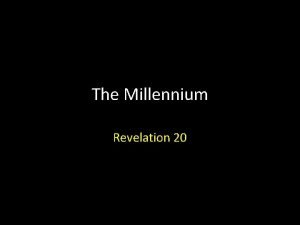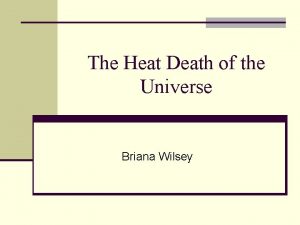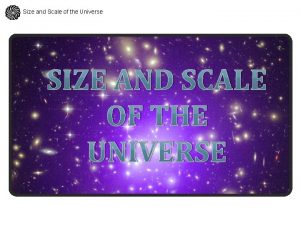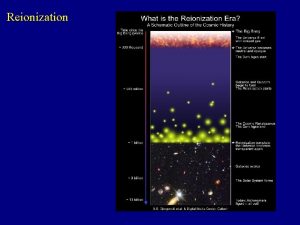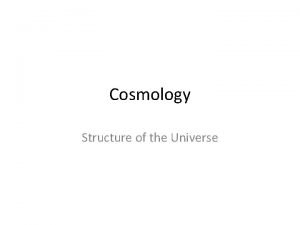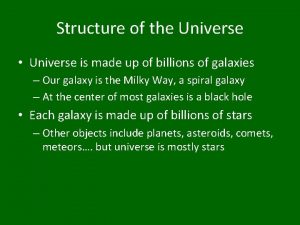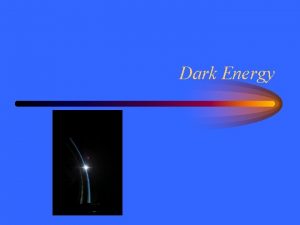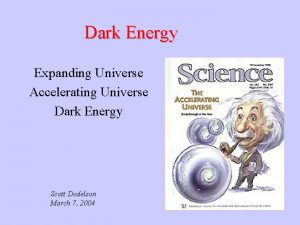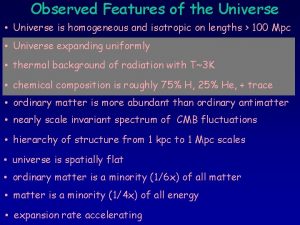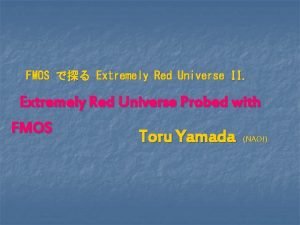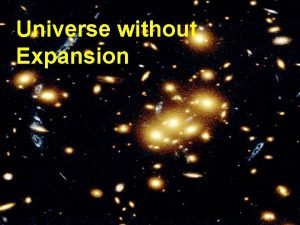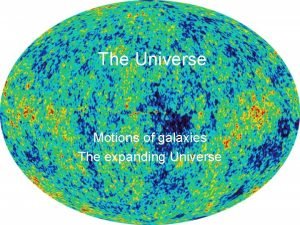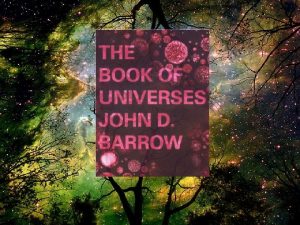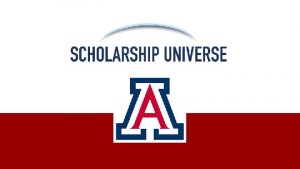Structure of the Universe Structure of the Universe























































- Slides: 55

Structure of the Universe

Structure of the Universe Or What’s Out There and Where is it?

The Solar System • Note large separation of inner and outer planets National Geographic Magazine

Remembering the names of the planets in order: My Very Elegant Mother Just Sat Upon Nine Porcupines Mercury Venus Earth Mars Jupiter Saturn Uranus Neptune Pluto

The Inner Planets: : Mercury Venus Earth Mars • Close together (Relatively) • Terrestrial (made of rock like Earth) • Size (escape velocity of atmosphere) Asteroids

The Outer Planets: : Jupiter Saturn Uranus Neptune • Spread out (Relatively) • Gassy and icy giants • Size (escape velocity of atmosphere) Pluto

The Kuiper belt and Oort Cloud: : • Hundreds of millions of comet like bodies • 50, 000 AU in radius • Total mass 10 to 100 times Earth’s mass • A tenth planet? ? ? • Where comets come from

The Solar System (again) • Pluto is most likely a Kuiper belt object National Geographic Magazine

Our Solar Neighborhood:

Galaxies (Hubble types): Contemporary Astronomy, J. Pasachoff

Galaxies (Hubble types): Contemporary Astronomy, J. Pasachoff Elliptical Normal Spiral Barred spiral Irregular Peculiar

The Milky Way Galaxy You are Here • 100, 000 LY in diameter, 16, 000 -3, 000 LY thick • Contains a hundred billion stars (1011) • Total star mass about 3 x 1041 kg • The Sun is about 28, 000 LY from the galactic center • Not very big as galaxies go.

The Milky Way Galaxy National Geographic Magazine • The Sun orbits once every 200 million years • Our speed of orbit is about 250 km/s

The Milky Way Galaxy (closeup) We are in the middle of a “chimney” National Geographic Magazine

Elliptical Galaxy (Don’t make many new stars)

The Whirlpool Galaxy (spirals make stars In their arms in an on-going process)

Barred spiral channeling material into its core Giving birth to stars



Andromeda with a couple elliptical companions

There are many Galaxies. . . • There about 1011 galaxies in the visible Universe • The closest is about 2 x 106 LY from us

Star Clusters (These are much smaller than galaxies) Photo and text courtesy Of the Hubble Space Telescope site This stellar swarm is M 80 (NGC 6093), one of the densest of the 147 known globular star clusters in the Milky Way galaxy. Located about 28, 000 light-years from Earth, M 80 contains hundreds of thousands of stars, all held together by their mutual gravitational attraction. Globular clusters are particularly useful for studying stellar evolution, since all of the stars in the cluster have the same age (about 15 billion years), but cover a range of stellar masses. Every star visible in this image is either more highly evolved than, or in a few rare cases more massive than, our own Sun. Especially obvious are the bright red giants, which are stars similar to the Sun in mass that are nearing the ends of their lives.

Nebulae • Clouds of gas and dust • Birthplace of solar systems and stars Types of Nebulae • Emission Nebulae – Actually emit light • Reflection Nebulae – Merely reflect light • Absorption Nebulae – Block the light of stars. • Planetary Nebulae – Ejected star material.







Large Scale Structures • Groups • Clusters • Super Clusters, Clouds, Walls, Voids

NGS Map of the Universe National Geographic Magazine

Groups • A few Million LY wide • 3 - 6 conspicuous galaxies • A dozen or so smaller galaxies • Only a few times more dense than the Universe • Some of the smaller galaxies orbit the larger ones • Orbital speeds are 100 -200 km/s

Our own Local Group National Geographic Magazine


Clusters (of galaxies) • 10 - 20 Million LY wide • Hundreds to Thousands of galaxies • (10 - 20 times more dense than the Universe) • The largest gravitationally bound structures • Orbital speeds are around 1000 km/s (faster)

Our own cluster and supercluster: National Geographic Magazine

Super Clusters, bubbles, walls Super Clusters: • 100 Million LY wide or more • Tens of Thousands of galaxies • Modest enhancement of density Walls and bubbles: • Much larger than Superclusters

Each dot is a galaxy:

So, putting it all together: National Geographic Magazine

National Geographic Magazine

National Geographic Magazine

National Geographic Magazine

National Geographic Magazine

National Geographic Magazine

National Geographic Magazine

National Geographic Magazine

National Geographic Magazine

National Geographic Magazine






So where does all the structure come from? ? Chaotic condensation from a superhot state… National Geographic Magazine

None of the ideas in this presentation are my own. Most of the astronomical images are from the Hubble Website at http: //oposite. stsci. edu/ (unless otherwise noted) The solar system images came from The Nine Planets web page at www. seds. org/billa/tnp The map of the Universe came from the October 1999 National Geographic magazine. The images of galaxy types (B+W) came from my college textbook “Contemporary Astronomy” by Jay Pasachoff The classification of large scale structure, and most of my knowledge of astrophysics came from the most excellent book “The Whole Shebang” by Timothy Ferris I also read Jay Pasachoff’s book to answer really basic questions like “uh what kinds of galaxies, or nebulae are there? ” Chris Murray
 Hierarchical structure of the universe
Hierarchical structure of the universe Structure and evolution of the universe. lesson 1
Structure and evolution of the universe. lesson 1 Hát kết hợp bộ gõ cơ thể
Hát kết hợp bộ gõ cơ thể Bổ thể
Bổ thể Tỉ lệ cơ thể trẻ em
Tỉ lệ cơ thể trẻ em Chó sói
Chó sói Thang điểm glasgow
Thang điểm glasgow Chúa yêu trần thế alleluia
Chúa yêu trần thế alleluia Môn thể thao bắt đầu bằng chữ đua
Môn thể thao bắt đầu bằng chữ đua Thế nào là hệ số cao nhất
Thế nào là hệ số cao nhất Các châu lục và đại dương trên thế giới
Các châu lục và đại dương trên thế giới Công thức tính thế năng
Công thức tính thế năng Trời xanh đây là của chúng ta thể thơ
Trời xanh đây là của chúng ta thể thơ Mật thư tọa độ 5x5
Mật thư tọa độ 5x5 Phép trừ bù
Phép trừ bù độ dài liên kết
độ dài liên kết Các châu lục và đại dương trên thế giới
Các châu lục và đại dương trên thế giới Thể thơ truyền thống
Thể thơ truyền thống Quá trình desamine hóa có thể tạo ra
Quá trình desamine hóa có thể tạo ra Một số thể thơ truyền thống
Một số thể thơ truyền thống Bàn tay mà dây bẩn
Bàn tay mà dây bẩn Vẽ hình chiếu vuông góc của vật thể sau
Vẽ hình chiếu vuông góc của vật thể sau Biện pháp chống mỏi cơ
Biện pháp chống mỏi cơ đặc điểm cơ thể của người tối cổ
đặc điểm cơ thể của người tối cổ V. c c
V. c c Vẽ hình chiếu đứng bằng cạnh của vật thể
Vẽ hình chiếu đứng bằng cạnh của vật thể Fecboak
Fecboak Thẻ vin
Thẻ vin đại từ thay thế
đại từ thay thế điện thế nghỉ
điện thế nghỉ Tư thế ngồi viết
Tư thế ngồi viết Diễn thế sinh thái là
Diễn thế sinh thái là Các loại đột biến cấu trúc nhiễm sắc thể
Các loại đột biến cấu trúc nhiễm sắc thể Bảng số nguyên tố lớn hơn 1000
Bảng số nguyên tố lớn hơn 1000 Tư thế ngồi viết
Tư thế ngồi viết Lời thề hippocrates
Lời thề hippocrates Thiếu nhi thế giới liên hoan
Thiếu nhi thế giới liên hoan ưu thế lai là gì
ưu thế lai là gì Sự nuôi và dạy con của hổ
Sự nuôi và dạy con của hổ Sự nuôi và dạy con của hổ
Sự nuôi và dạy con của hổ Hệ hô hấp
Hệ hô hấp Từ ngữ thể hiện lòng nhân hậu
Từ ngữ thể hiện lòng nhân hậu Thế nào là mạng điện lắp đặt kiểu nổi
Thế nào là mạng điện lắp đặt kiểu nổi Duproc
Duproc Dollar universe ordonnanceur
Dollar universe ordonnanceur Orsyp
Orsyp Orbit venus
Orbit venus There is no neutral ground in the universe
There is no neutral ground in the universe The last book in the universe
The last book in the universe ❄️ heat death of the universe
❄️ heat death of the universe What is the answer to life the universe and everything
What is the answer to life the universe and everything The scale of the universe is measured in
The scale of the universe is measured in Degenerate era of the universe
Degenerate era of the universe Portland state university scholarship
Portland state university scholarship Dollar universe scheduler
Dollar universe scheduler
